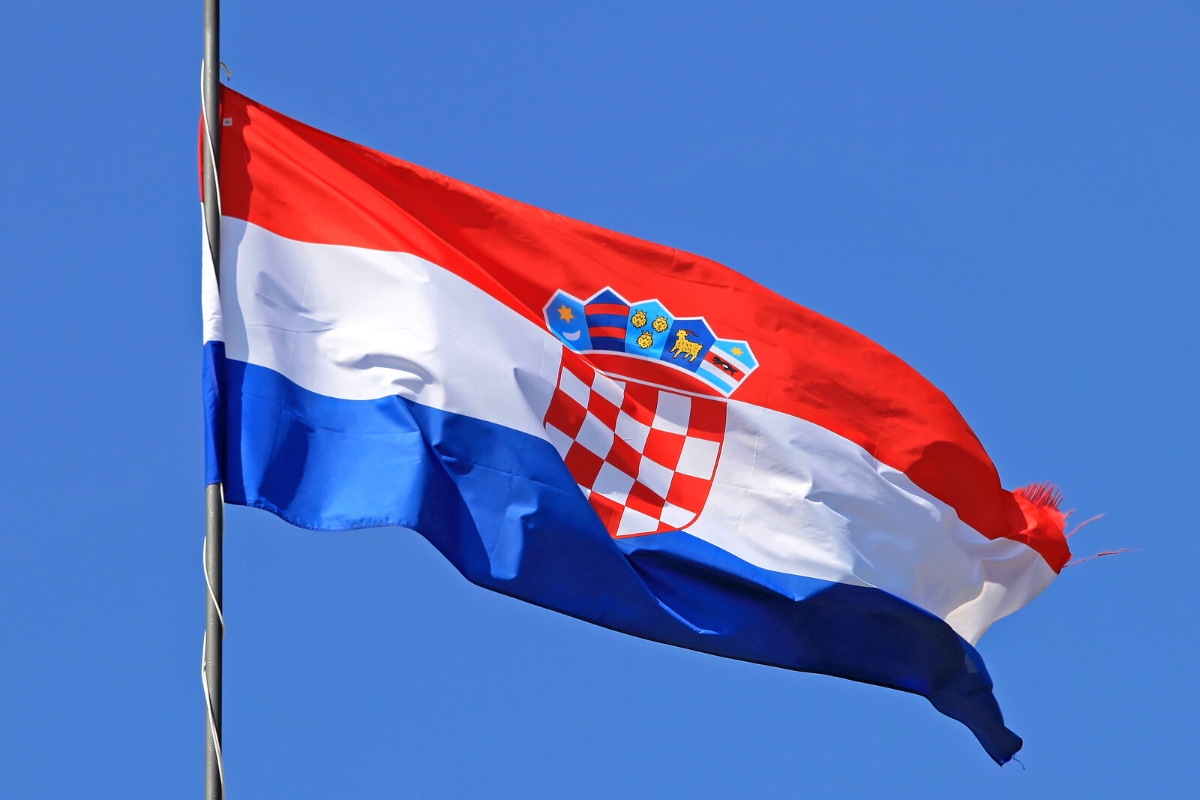
With its distinctive red and white checkerboard pattern, the Šahovnica is a symbol deeply rooted in Croatian history and culture. But where does it come from and what does it stand for? Read on to find out…
Whether you're strolling through the picturesque streets of Dubrovnik, exploring the historic city of Split, or wandering through the enchanting landscapes of Plitvice Lakes National Park, the red and white checkerboard pattern of the Šahovnica proudly adorns buildings, flags, and souvenirs, serving as a constant companion on your journey. It's not just a symbol; it's a testament to Croatia's enduring cultural identity, a reminder that unity and resilience are woven into the very fabric of this breathtakingly beautiful country.
Where does it come from?
The Šahovnica, also known as the "Croatian checkerboard," is one of the oldest national symbols in Europe. Its roots can be traced back to the early medieval period when the Kingdom of Croatia emerged as a distinct political entity. The earliest known use of the Šahovnica dates back to the 10th century, during the reign of King Dmitar Zvonimir (r. 1075–1089). It is believed to have been inspired by the popular game of chess, with the alternating red and white squares resembling a chessboard.
The Šahovnica evolved over the centuries, appearing in various forms and patterns, but the classic checkerboard design endured as the most recognizable representation of Croatia. It was often used on shields, coats of arms, and banners, symbolizing Croatian identity and unity.
What does it mean?
The Šahovnica carries deep symbolism for the Croatian people. Its red and white checkered pattern is thought to represent the historic regions of Croatia, with each square symbolizing a specific territory or province. This symbolism reinforces the idea of unity among diverse regions within Croatia, emphasizing the strength of the nation when its people come together.
Section Type: standardWidthImageS
The coat of five arms crowning the checkered shield represents regions of Croatia. Left to right: Croatia (the oldest known coat of arms), Dubrovnik Republic, Dalmatia, Istria, and Slavonia.

The Šahovnica also reflects Croatia's rich history and struggle for independence. During periods of foreign rule, such as the Habsburg Monarchy and the Yugoslav Federation, the Šahovnica served as a potent symbol of resistance and Croatian identity. It became a rallying point for those who sought to preserve their culture and traditions in the face of external pressures.
Not all good
While the Šahovnica has played a significant role in representing Croatia's culture and national identity, it is essential to acknowledge a dark chapter in its history. During World War II, the Šahovnica was used by the Ustaše, a violently fascist and ultranationalist organization that came to power in the Independent State of Croatia (NDH), a puppet state established by Nazi Germany and Fascist Italy in 1941.
The Ustaše regime, led by Ante Pavelić, promoted a brutal and oppressive form of nationalism that sought to create a racially pure Croatian state. During this period, the Šahovnica was co-opted by the Ustaše and used in conjunction with their extreme ideology. The Šahovnica appeared on the NDH flag, and it was incorporated into various symbols and propaganda of the Ustaše regime.
Section Type: standardWidthImageS
Adolf Hitler (left) meets Ante Pavelić (right) upon his arrival at the Berghof in Bavaria, Germany, 1941.

This appropriation of the Šahovnica by the Ustaše has left a painful and controversial legacy in Croatian history. The flag, which had long symbolized unity and Croatian identity, was associated with the atrocities committed by the Ustaše, including mass killings, forced conversions, and the establishment of concentration camps where thousands of Serbs, Jews, Romani people, and political opponents were murdered.
A symbol of unity
In the post-World War II era, Croatia underwent significant political changes and eventually became part of the Socialist Federal Republic of Yugoslavia. During this time, the Šahovnica was largely disassociated from the Ustaše and reclaimed as a symbol of Croatian national identity and heritage.
Today, the Šahovnica remains an enduring symbol of Croatia's cultural and national identity. It represents not only the nation's rich history and traditions but also its resilience in the face of adversity. The flag is a source of pride for Croatians, serving as a reminder of their unity and the enduring spirit of their people.
Soccer and the Šahovnica
Beyond its historical and political significance, the Šahovnica plays a pivotal role in Croatia's contemporary culture. Soccer holds a special place in the hearts of Croatians and the Šahovnica is prominently displayed on the jerseys of the Croatian national soccer team.
One of the most memorable moments in recent Croatian history came during the 2018 FIFA World Cup. The Croatian national team, adorned with the Šahovnica, reached the finals, a remarkable achievement for a country with a population of just over 4 million. The team's performance and their display of unity under the Šahovnica flag inspired tremendous pride and euphoria among Croatians.
Section Type: standardWidthImageS
Šime Vrsaljko of the Croatia national football team during the 2018 FIFA World Cup. (Photo: Антон Зайцев, CRO-ENG (17), CC BY-SA 3.0)

During major soccer tournaments, the Šahovnica can be seen everywhere in Croatia. Streets are adorned with flags, and gatherings in town squares become a sea of red and white checkers. The country comes to a standstill as people gather to watch matches, demonstrating their unwavering support for their team and their nation.
Soccer, and by extension the Šahovnica, has a profound influence on Croatia's younger generations. Children grow up with dreams of representing their country on the international stage, and the Šahovnica on their soccer jerseys becomes a symbol of those aspirations.
The long and the short
The Šahovnica is much more than just a flag; it is a powerful symbol of Croatia's history, culture, and national pride. Its enduring popularity reminds us that the Šahovnica is not only a historical emblem but a living symbol that continues to shape Croatia's modern identity.
Section Type: cta
Visit the land of the Šahovnica with SA Expeditions. First peruse our sample Croatia itineraries, then speak to a Destination Expert about designing your own bespoke adventure.


Copyright © 2026 SA Luxury Expeditions LLC, All rights reserved | 95 Third Street, 2nd floor, San Francisco, CA, 94103 | 415-549-8049
California Registered Seller of Travel - CST 2115890-50. Registration as a seller of travel does not constitute approval by the state of California.










